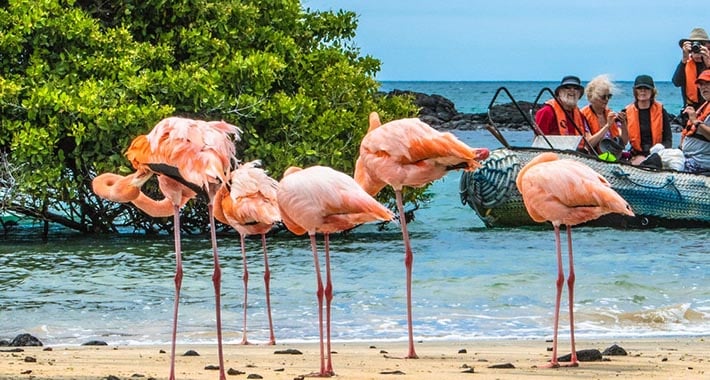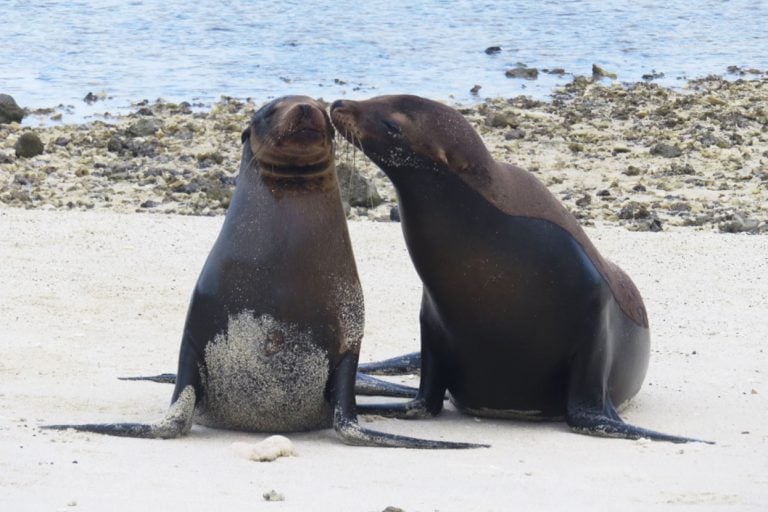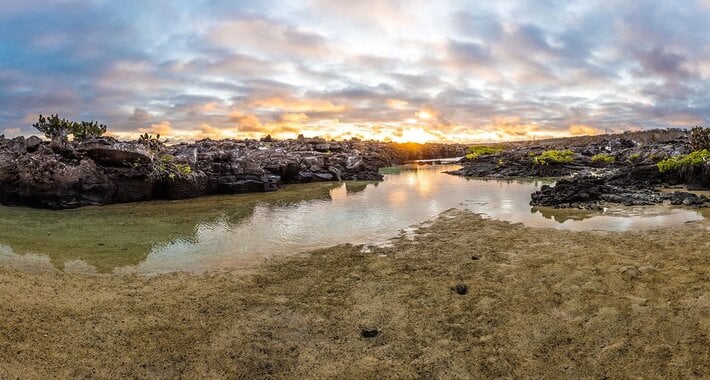A unique bird, the Galapagos Red-Footed Boobie

Galapagos Islands The red-footed booby is an unusual-looking bird, distinguished by its vivid blue beak and bright red feet. Even stranger is the fact that a bird with webbed feet makes its nests among bushes and trees. Strong fingers enable clinging to branches for birds such as eagles, sparrows, crows, and most other birds that spend a considerable amount of time in trees. Though iguanas swim in the water and birds have lost the capacity to fly, such abnormalities are not uncommon on the Galapagos Islands.
In stark contrast, red-footed boobies are among the most polymorphic seabirds worldwide, making it exceedingly challenging to distinguish them based solely on plumage color. This is because each individual bird has a distinct and uniform red foot and blue beak color. Red-footed boobies are officially classified as having three distinct varieties of plumage: brown, white, and white-tailed brown. However, there is a large range of hues within each of these categories. Only the brown and white-tailed brown species of birdlife may be found on the Galapagos Islands. Interestingly, specialists still don’t know why Galapagos red-footed boobies show such a wide variety of plumages and how that may help the population (sexual selection, speciation, etc.), despite the fact that a lot of research has been done on the subject.
Polymorphic species, to put it simply, are those in which individual variation in appearance is significant.

The Galapagos Islands are home to three different species of boobies: blue-footed, red-footed, and Nazca boobies
[/caption]
Mating & Nesting Behavior of Galapagos Red-Footed Boobies
Galapagos Red-footed Boobies are a sight to behold!
Ahead of your Galapagos excursion, get ready!
The mating season for red-footed boobies is unpredictable, occurring around every 15 months. If you are fortunate enough to witness one of these amazing dances or witness hundreds of fluffy white balls swimming around, you will be treated to an amazing experience.
Like other booby species, they begin their mating season with elaborate, highly ritualized welcome dances. The male participants in the dance showcase their gorgeous blue necks by tossing their heads back toward the sky during a technique called “sky pointing.” The birds also do an ungainly strut in which they flaunt their vivid blue feet and reveal the vivid red hue by waving them in the air. Recurring these routines around the nest, red-footed boobies sometimes spend several seasons with the same spouses. Red-footed booby birds are unique in that they nest on tiny trees and bushes, unlike other booby bird species, which makes their dance a truly amazing feat of balance.
The red-footed booby only has one chick, unlike other booby species, therefore the horrific practice of siblicide, which is well-known among booby communities, is meaningless after the chick hatches and is nurtured by both parents. It takes the babies three months to fledge, and it takes them five months to be able to travel great distances.
Where to look for Galapagos red-footed boobies
Genovesa Island is by far the greatest place to see Galapagos red-footed boobies on land, home to the biggest colony in the world. All the same, the red-footed booby is a maritime bird that lives mostly at water. The finest location to witness this bird’s talents is at sea, so as you get closer to Genovesa Island, keep a look out for its red feet soaring through the air or perched on ship railings. Red-footed boobies seem like clowns when they’re on shore, yet they’re great fishers and divers. Their blue features and awkward red shoes blend into a picture of elegance and strength as they soar through the air. They are even nimble enough to snag fish as they fly into the air. However, when they slice through the water, they may descend as far as thirty meters to capture their meal. They can close their noses to keep water out of their breathing apparatus, which helps them swim.

Although they may be found throughout the tropics, red-footed boobies are most often seen on islands
Feeding expeditions
Galapagos Islands Pelagic birds, derived from the Greek word pelagos, which means ocean-going, include red-footed boobies, which may fly up to 93 miles when fishing. They are also excellent long-distance fliers. They are strong, yet they find it challenging to take to the air. Without wind, red-foots are incredibly awkward, half-running, half-flying until they gain sufficient speed to lift off. Red-foots rely greatly on wind to take flight. They launch themselves into the wind and press their feet up against the water’s weight as they leave the sea.
Due to their gregarious nature, red-footed boobies may frequently be seen flying over the ocean in big numbers. They look for their prey as they glide across the surface together. It’s interesting to note that they share food with dolphins and other predators. The boobies swiftly grab their meal while the dolphins herd the fish into shoals.
RELATED STORIES

What are the best birds to see in the Galapagos?

Six Stunning Ways Galapagos Island Animal Mothers Nurture Their Young

Guy Fawkes on the Galapagos Islands: Never forget the November “Finch”…

A Unique 6-Day Insular Inspiration Session with Charles Darwin on Santiago Island!
